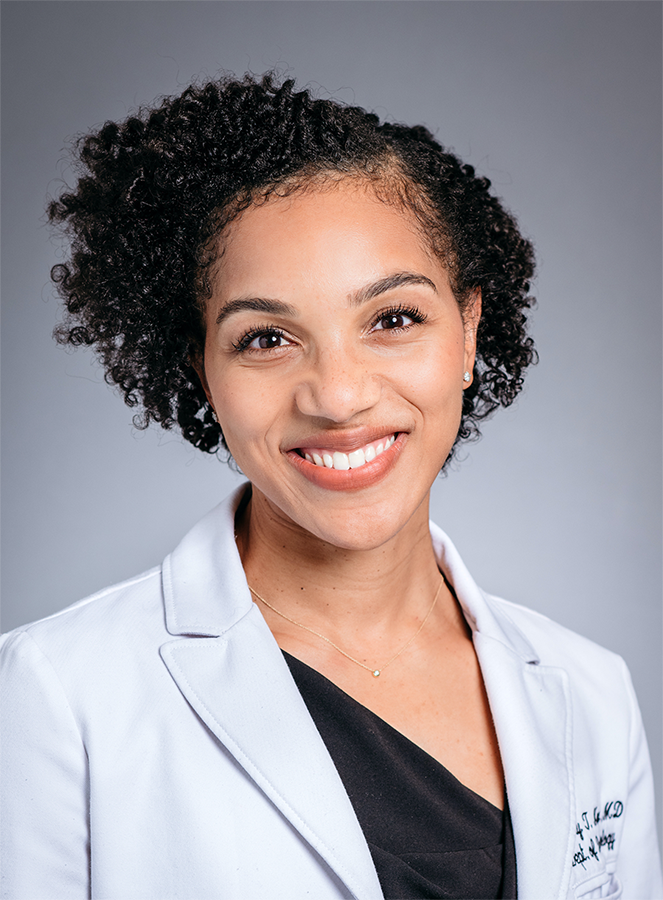 Black skin isn't thicker than white skin, even though, according to a 2016 study, 40 percent of medical trainees nationally believe that statement is true.
Black skin isn't thicker than white skin, even though, according to a 2016 study, 40 percent of medical trainees nationally believe that statement is true.
This is the opening salvo Tiffany Mayo, M.D., shared with second-year medical students in her recent Skin of Color lecture, presented during the students' Musculoskeletal & Skin module. Mayo, an assistant professor in the Department of Dermatology and course director, said this figure is eye-opening for the students.
"These study participants were their age, had similar training, and were as intelligent as they are, but they had these biases that came from who knows where because there is no science to support this idea," Mayo said. "Beginning here helps make the information relevant to our students and helps open a conversation on examining biases and how the biases we have can affect how we treat patients."
This is the second time Mayo has presented this lecture as part of the MSK module but has shared it previously invited by the Office of Diversity, Equity and Inclusion before formally leading the course. She said student feedback to the lecture was overwhelmingly positive, and students shared they'd like to see more intentional diversity in their dermatology lectures.
"I asked colleagues in the department to consider including photos of how diseases present in patients with darker skin, along with classic textbook cases, in their presentations, and they began doing so," she said.
Mayo knew she wanted to make the lecture a part of the curriculum from the first time she presented it and had the chance to do so when she became course director in 2020.
Mayo said color could play a big part in performing a basic exam to diagnose diseases like jaundice, erythroderma, or anemia.
"Our eyes can be deceiving when assessing patients if we're not aware of how diseases may present differently or how a condition might look on skin of color.”
"We then talk about normal variances in skin of color that might not be seen in lighter skin type. By the end of the lecture, we've had a great conversation about myths and about biases we hold because of those myths."
She said it's essential for students to understand as they approach patients and move into their clinical training to use the knowledge to better treat their patients.
"One of the most important things to me in this course is creating a safe space. I know not everyone is going to feel comfortable sharing all their thoughts, but having space to answer students' questions, having conversations about myths they've heard, and talking about how those believed myths can impact patient care is necessary."
"I also approach students with the idea that it’s OK not to know everything and to ask questions to help understand their patient's concerns," she said, explaining that what the patient sees as their main concern might not be exactly what their physician is treating. "I think I'm helping students understand that they need to talk with a patient, to understand that academic knowledge and training should balance with understanding their patient's perspectives on their disease and challenges they have. Because those challenges and concerns are going to affect treatments and outcomes."
Mayo said educators looking to intentionally connect inclusion into lectures for their specialty could first consider outcomes in specific patient populations and then consider how the conditions leading to those outcomes could be approached differently, starting with medical student education.
"Engaging students with this material might not be high-yield in terms of what they're tested on for board exams, but is something very high yield in terms of caring for patients and changing healthcare."
